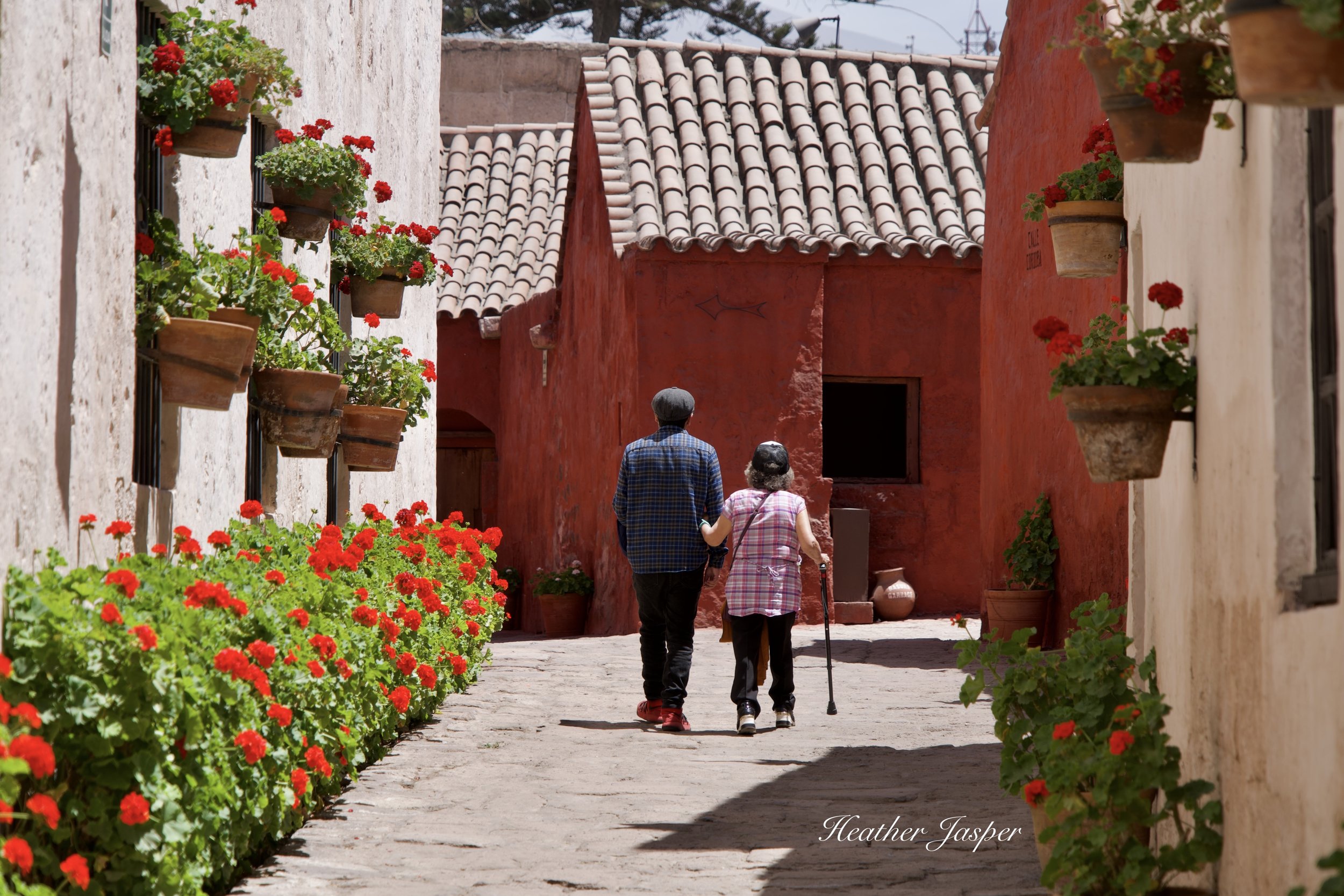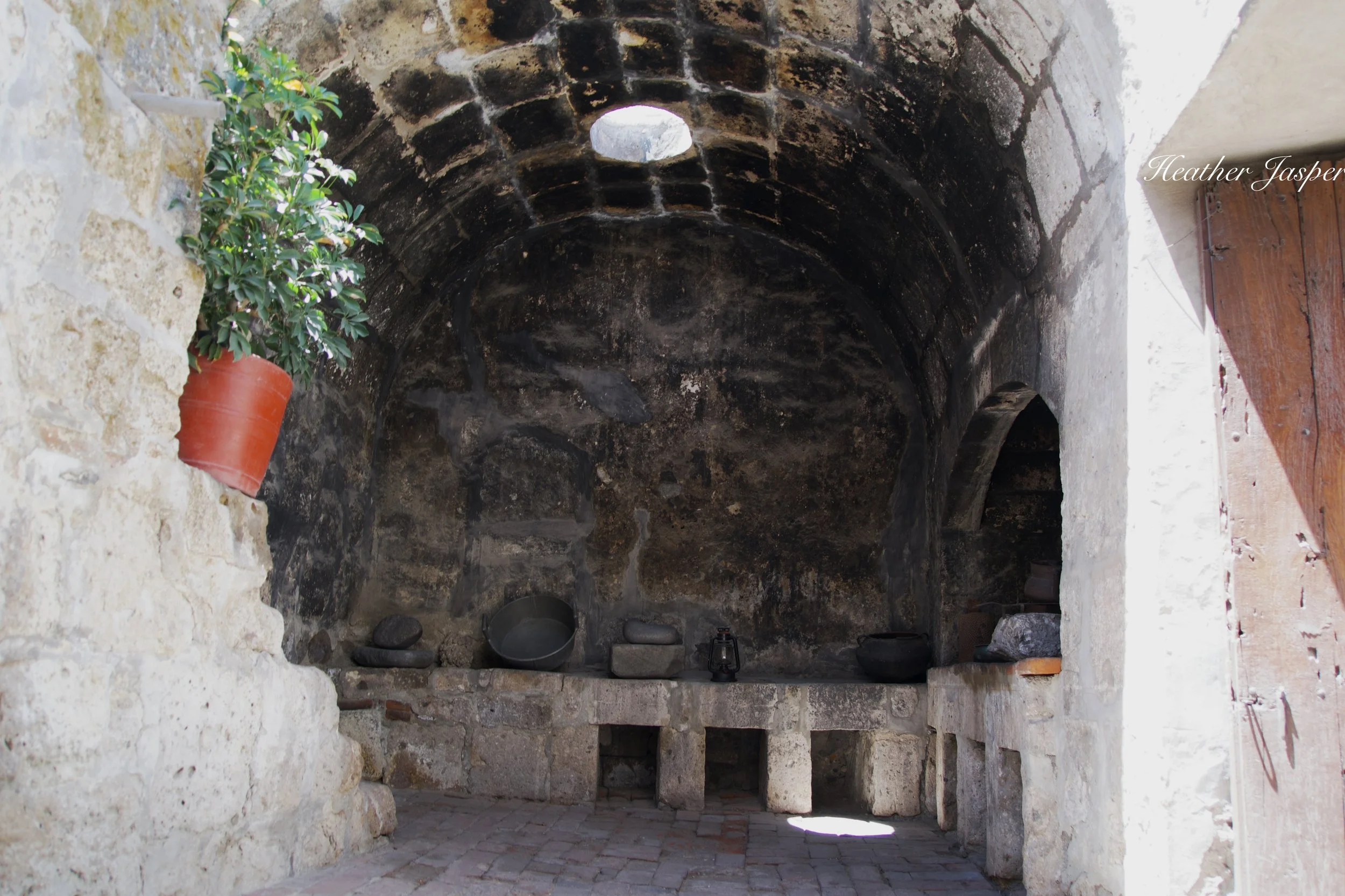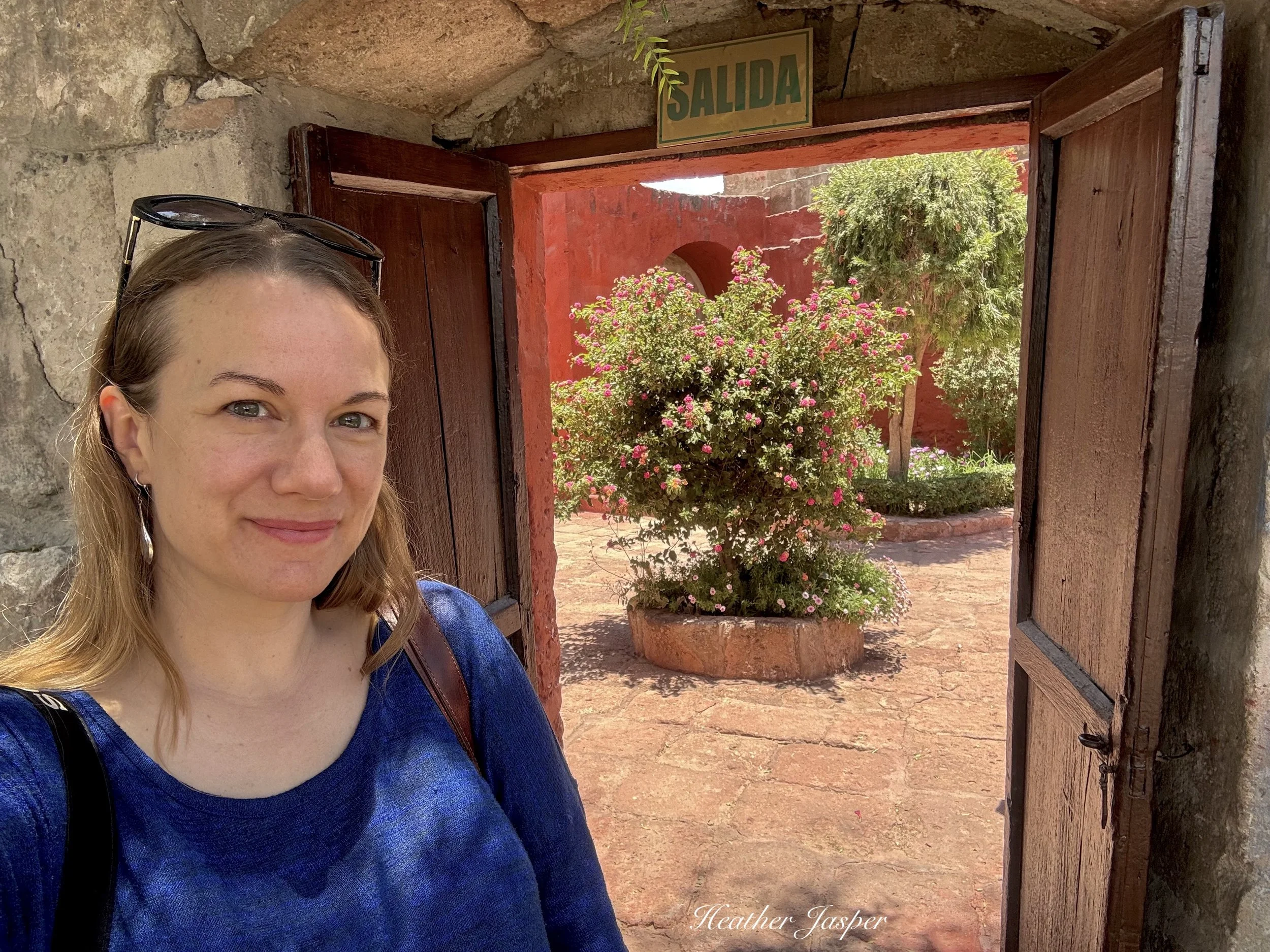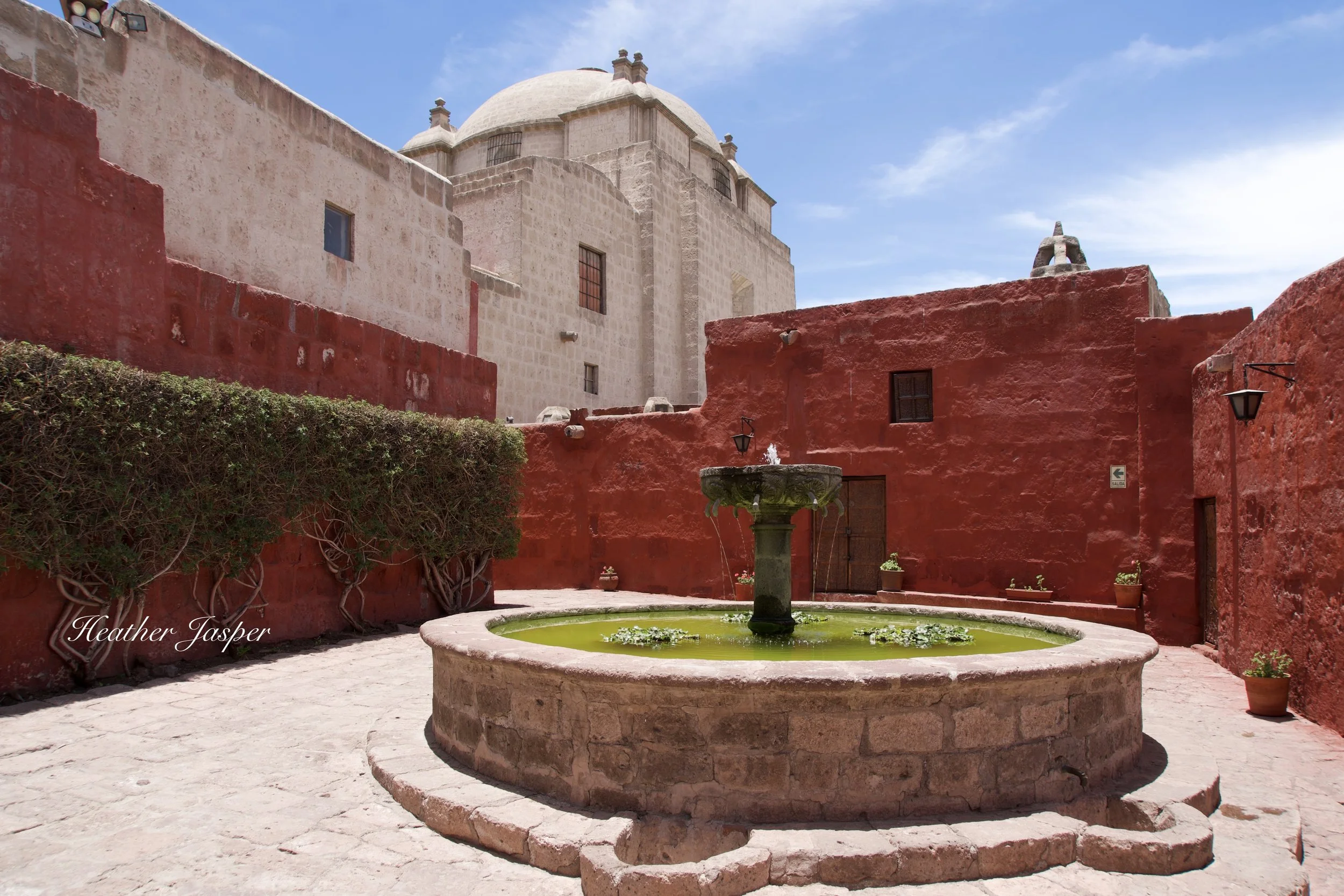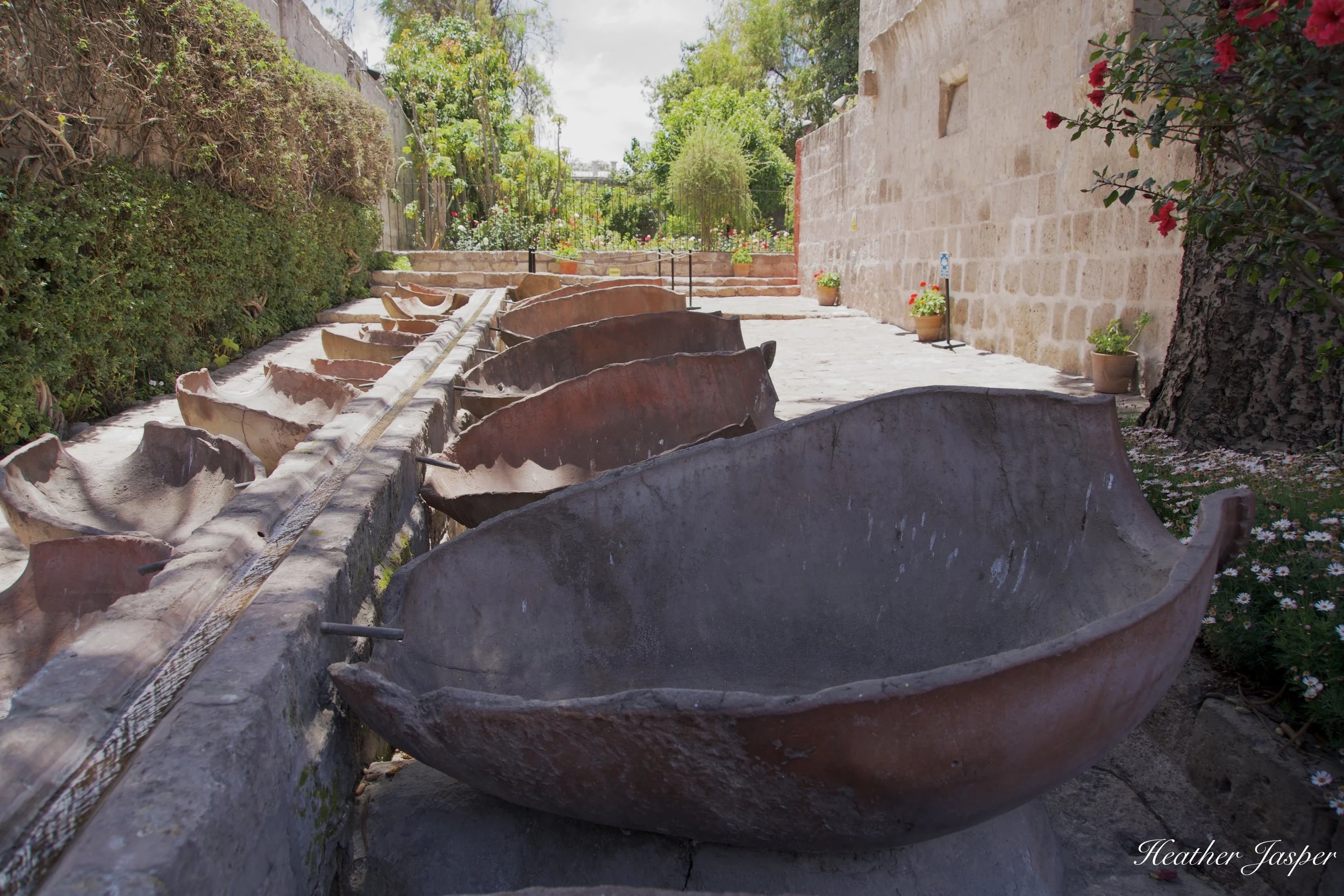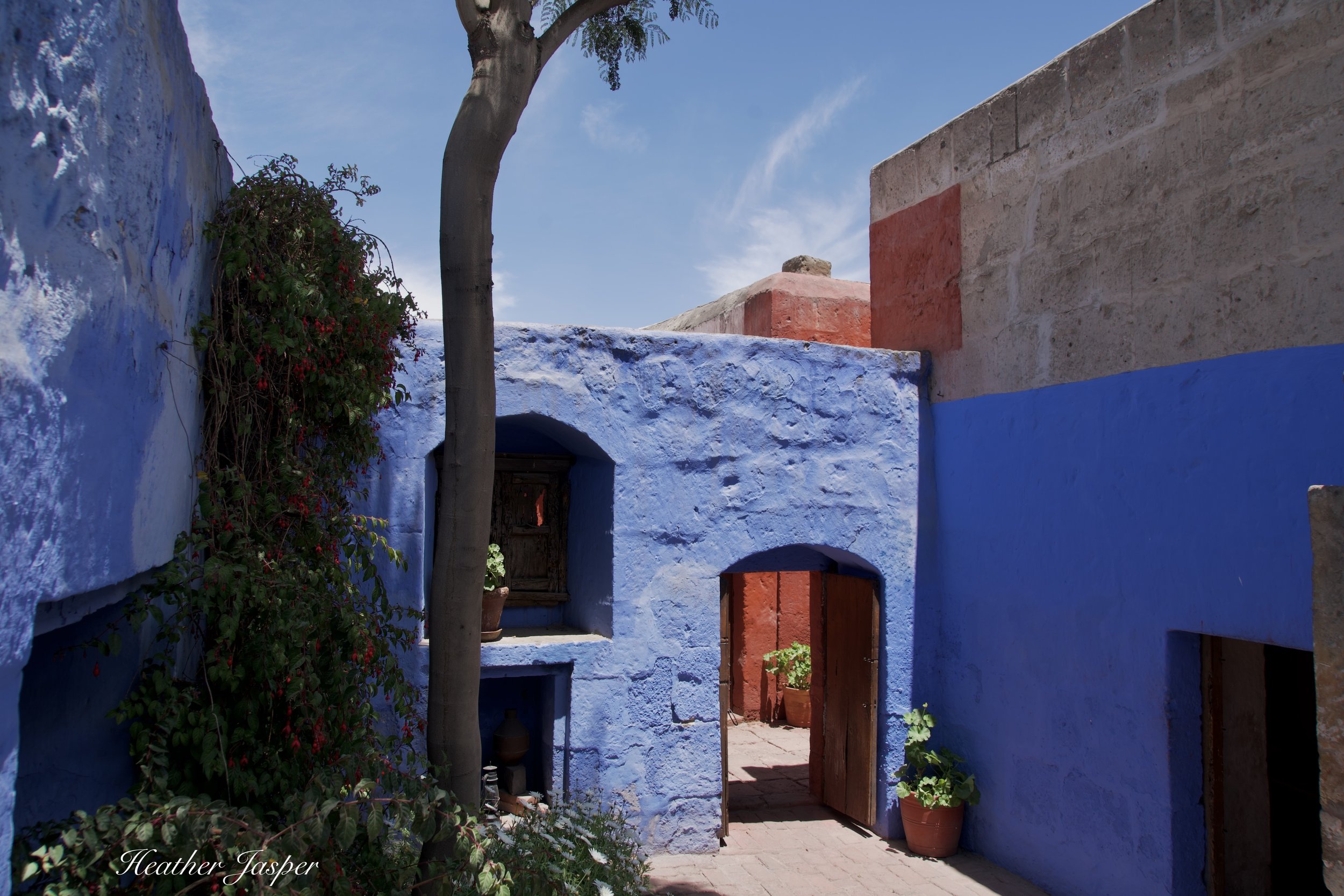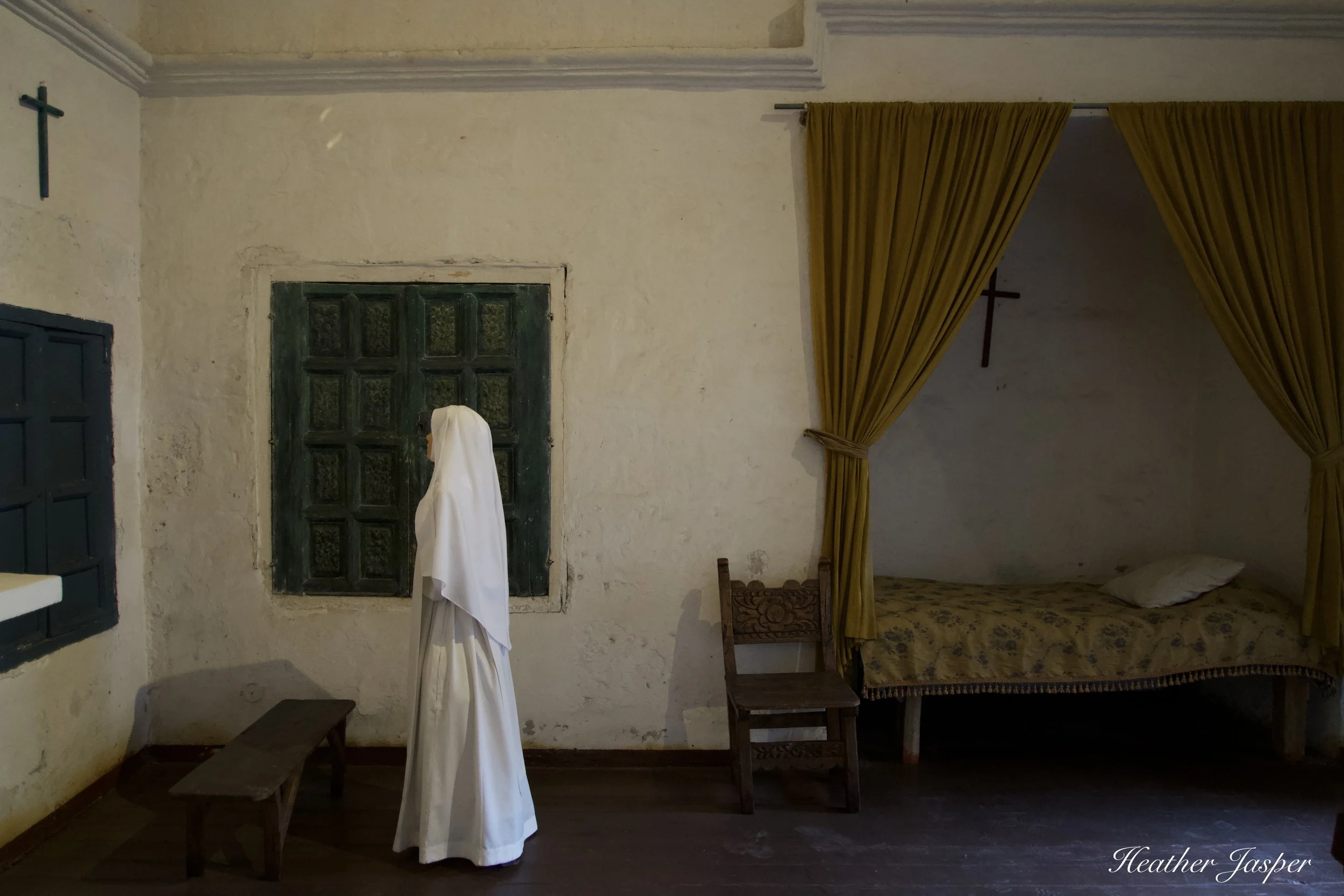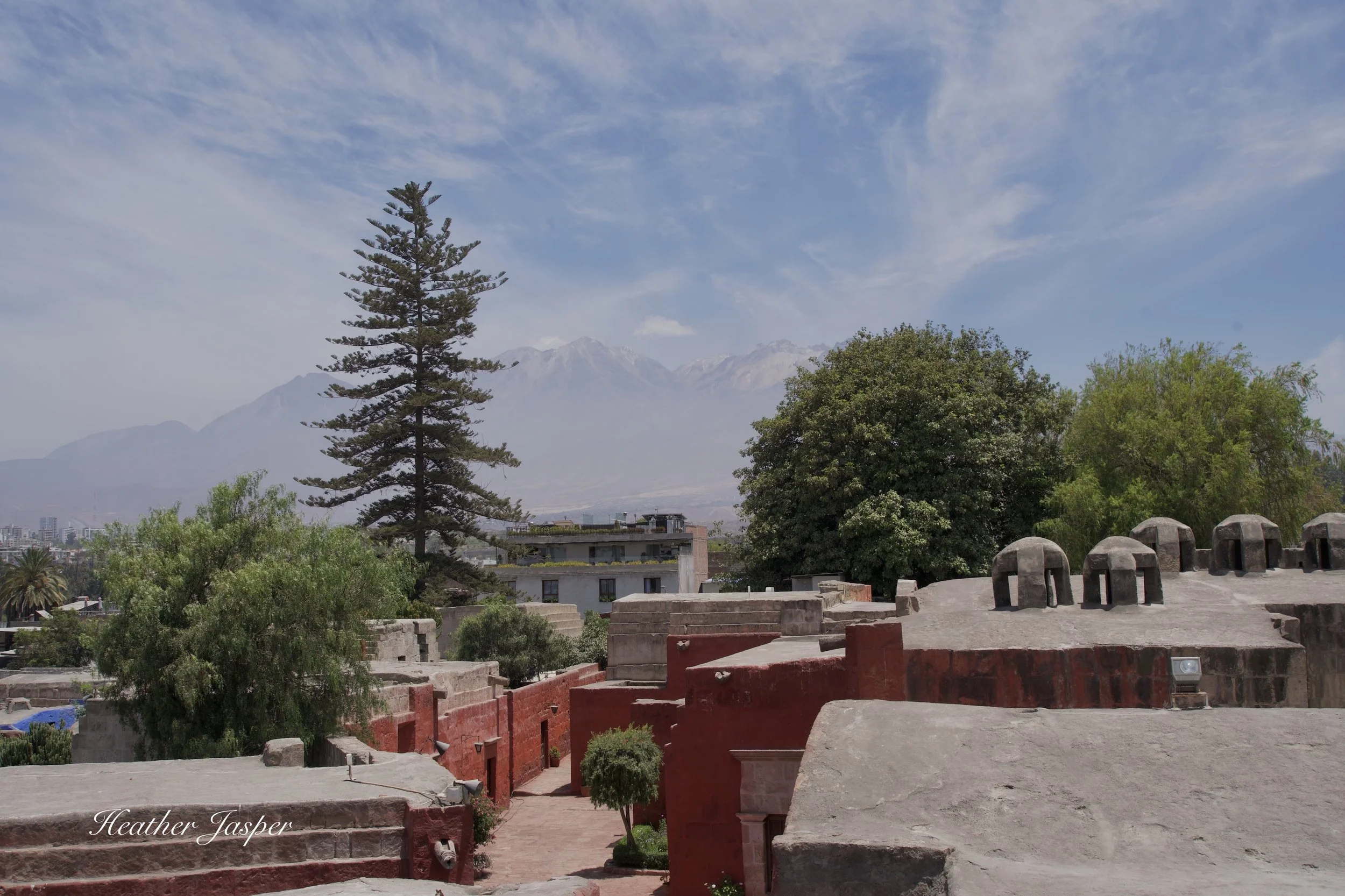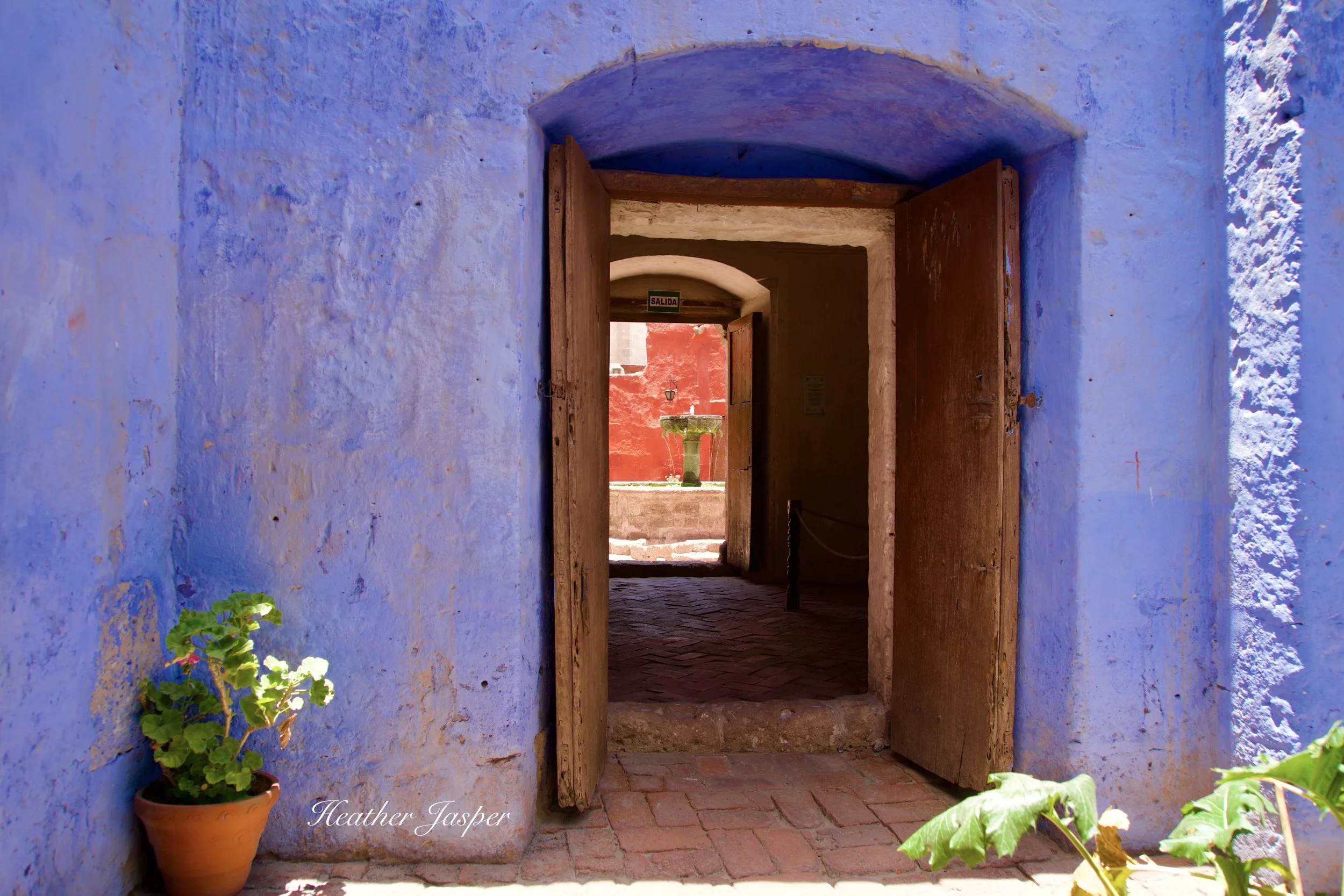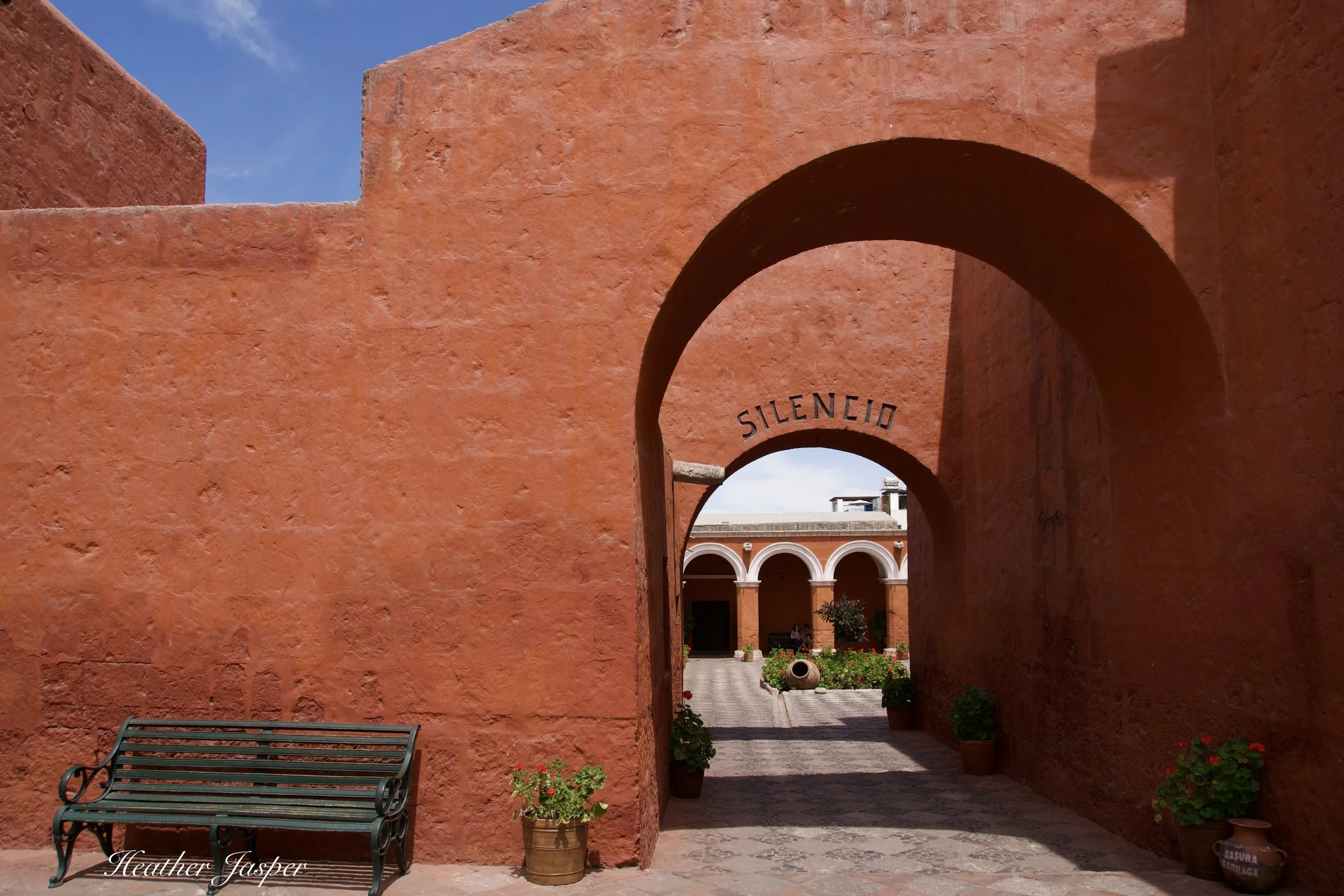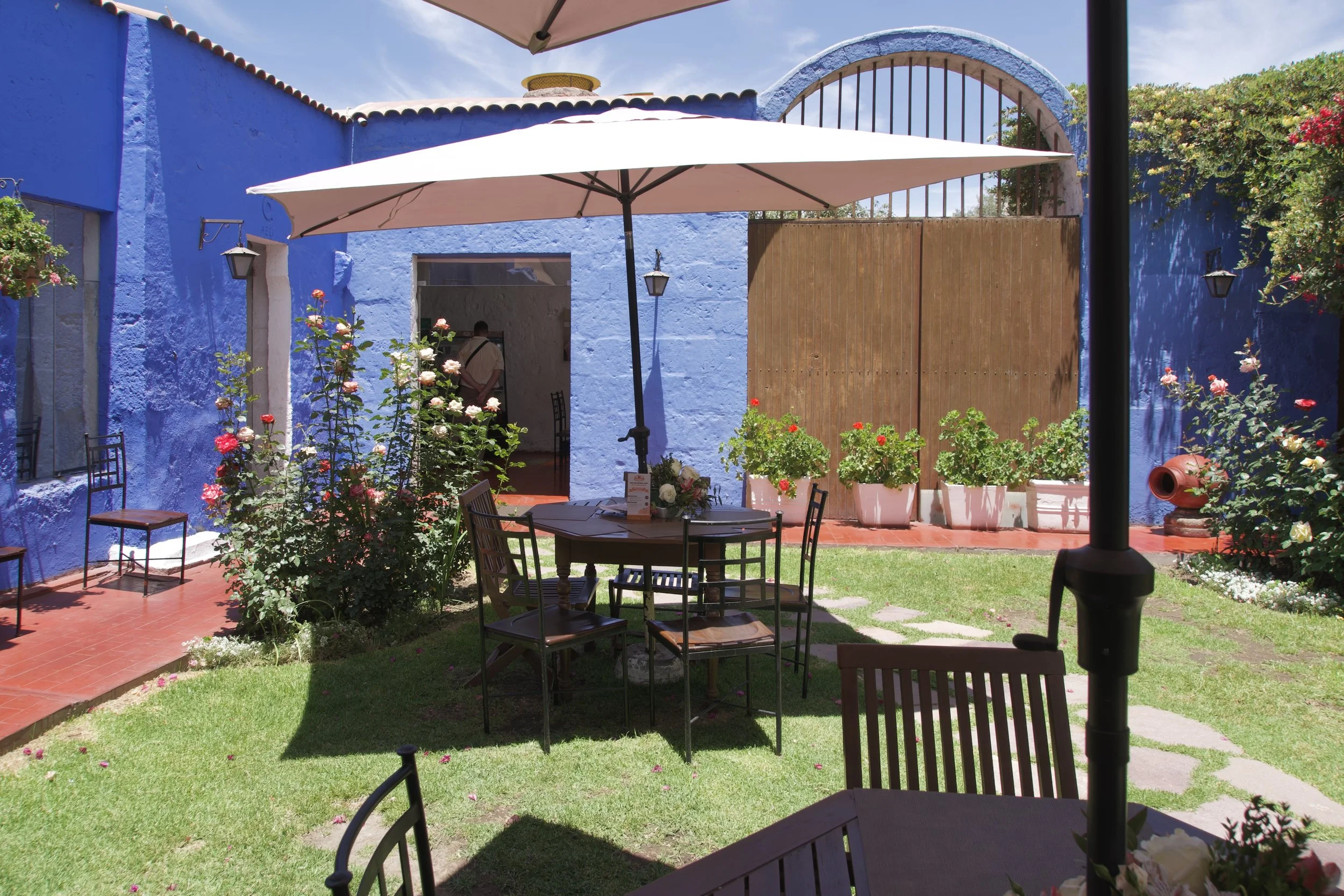Santa Catalina
Santa Catalina’s inner cloisters are a photographer’s dream come true.
Santa Catalina is the most popular place in Arequipa and for good reason.
Santa Catalina de Siena is the patron saint of the Monasterio de Santa Catalina. It’s called a monasterio in Spanish, but in English would more likely be called a convent, since it was built for nuns and never housed monks.
The Santa Catalina convent was founded in 1579 but most of the buildings you see today are from the 1800s. The original buildings were adobe, which crumbled with the first earthquake. Later walls were built with stone and mortar but were still not strong enough to withstand Arequipa’s frequent strong quakes. Finally, thick walls of sillar blocks, cut to fit without mortar, withstood the test of time.
They also learned to add arches, which strengthened both walls and ceilings. They’re beautiful, but also practical. Many of the bed nooks built into the thick walls have an arch over them. Perhaps they believed that God helps those who know how to not be crushed in an earthquake in the middle of the night.
Sillar is a kind of pumice, ash from Arequipa’s surrounding volcanoes compacted and petrified over millennia into the stone that most of the historic parts of the city were built with. Walking around the city, you’ll be dazzled by the strong desert sun reflecting off white walls on all sides. In Santa Catalina, most of those walls were painted red or blue to remind nuns of their ancestors’ homeland in Andalucía.
Today, Santa Catalina feels like a tiny city within the city. It’s about five acres and includes not only places of worship but also separate homes, streets, plazas and its own cemetery. There was one central bakery, though each home also had its own kitchen.
Many kitchens still have original stones used as mortars, plus ancient pots, pans and lamps.
The best time to see what it was like in centuries past is to visit on Tuesday or Wednesday evening, when the convent is open until 8:30. Sunset in Arequipa on the longest days of the year, in December, can be as late as 6:22pm and on the shortest days in June as early as 5:20pm. Any time of year, you can be assured that it will fully dark by 7:30 so you can see the nunnery lit by antique oil lamps and candles. Kitchen fires are lit to show what it was like to cook until 1970.
The Santa Catalina nunnery was not opened to the public until 1970, and until then most nuns lived lives similar to those in centuries past.
Today, only 16 nuns still live there, and they have given about 80% of the convent to tourism. They now live in modern apartments, on the north side of the property. They still cross the old streets for church every morning from 7-8am, which is why it doesn’t open for tourists until 9am. That gives them plenty of time to return to the modern cloisters before tourists start poking around the historic parts of the convent.
One of the open plazas and places for nuns to gather at Santa Catalina.
Santa Catalina is unique among South American nunneries. It was built for the daughters of wealthy Spanish families, though all the women who became nuns here were born in Peru. It was common in the 1500s and 1600s for parents of large families to expect one daughter to join a convent and one son to become a priest.
Clay vessels used to age wine were broken lengthwise and used to wash laundry.
Having nuns from wealthy families brought other things not common among convents, like servants and spacious apartments that the women could buy and sell like condos. The convent allowed women to bring up to four servants with her and many women who entered as young teens brought their nanny with them. In the 1600s and 1700s most novices were 13 or 14 years old. Many also brought a cook, since apartments had kitchens.
Many of the apartments have inner courtyards with gardens and even trees.
The apartments had small spaces for gardens, and many nuns grew potted flowers along with herbs and vegetables. There are still orange trees throughout the convent and potted geraniums everywhere. Many nuns had pets and both cats and dogs were very common.
Some of the novice rooms have mannequins showing scenes from daily life centuries ago.
Technically, living in an apartment with servants was supposed to be temporary, to help young women adapt to life inside the cloisters after taking their vows. They were novices for one to five years before having to choose whether to commit to spending the rest of their lives inside, or to go back outside. After taking their vows, they left the small rooms around the courtyard reserved for novices and could live in an apartment alone (with their servants) or with other women, often family members.
Sister Ana de los Angeles is one of the most famous nuns. She was beatified in 1985 and Arequipa is hopeful that now there is a Peruvian in the Vatican, she may finally be canonized.
It was usually younger girls who stayed as novices 4 to 5 years. Women who entered the convent in their 30s or 40s usually only had to be a novice for one or two years. Nuns were not required to be virgins, and many were widows.
Even on hazy days, the Chachani volcano is visible from many places in Santa Catalina.
Considering everything I’ve learned about what life was like for women in the 1500s through, TBH, most of the 1900s, I might have chosen a life as a cloistered nun. Unless I was raised in a very religious family, I probably wouldn’t have seen the appeal in my teens or 20s, but if I was widowed in my 40s in the 1600s, I am sure I would have rather lived in a convent than be forced to remarry.
There are several apartments off the plaza with the fountain, where I saw a heron fishing.
Women in Peru first voted in 1956, though in convents women voted since the 1500s every three years for their Abbess or Mother Superior. Inside the convent they could buy and sell property, choose their own servants and generally enjoyed much more freedom than women outside, who were considered property of their fathers and then of their husbands.
Even with servants, pets and family members, life in the cloisters was a quiet one with lots of time devoted to silent contemplation and prayer.
For centuries, marriages among wealthy families were generally arranged by a girl’s parents, so she may not have had any say in choosing her husband. And, since many of these wealthy men spend their days killing and plundering, their lives were brutish and short. Many young widows understandably chose to join convents, especially ones like Santa Catalina where they could live in their own apartment with their servants, children and sometimes sisters, cousins, aunts and mothers.
How to get a guide for Santa Catalina?
Visiting the convent today, you probably wouldn’t learn any of this unless you hired a guide. There are signs and plaques with information in some of the apartments, but they are only in Spanish and English. The guides at the entrance are excellent and also speak French, Italian and German. They are all women, most have worked there for years, and I highly recommend hiring one. Tip them 20 soles for one or two people, more if you have a big group or children.
Original and replica wooden doors have Andalusian patterns to remind nuns of the homeland.
How to visit?
Santa Catalina opens at 9am and closes at 6pm except Tuesdays and Wednesdays when it’s open till 8:30. The last entrance is 5pm or 7:30 on Tuesday and Wednesday. Santa Catalina is only closed three days a year: Christmas, New Year’s Day and the Friday before Easter.
The entrance ticket costs 45 soles, with discounts for students and seniors. Drones are not allowed.
Plan on having a cup of tea and pastry in the Santa Catalina café, where everything is made by the nuns.
This was my third visit to Santa Catalina. On my first visit, in 2013, I took the photo on the left and found the same spot relatively unchanged this year.
Want more info on Peru? Download my travel guide app Peru’s Best!
A Black-crowned night heron, fishing in broad daylight. Some people came around the corner and scared him off before I could see him get one of the goldfish.



